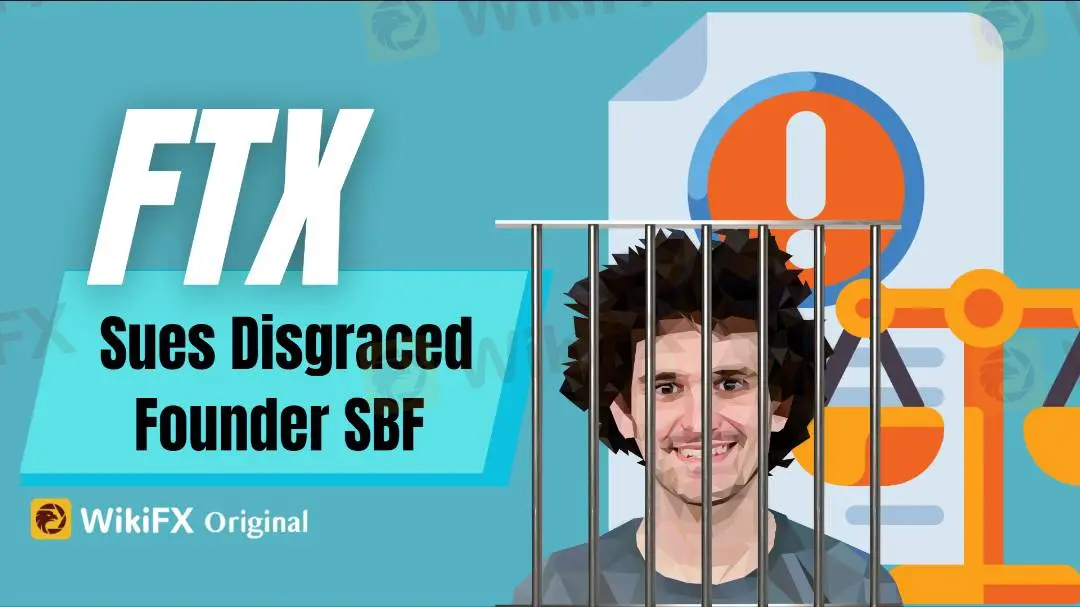简体中文
繁體中文
English
Pусский
日本語
ภาษาไทย
Tiếng Việt
Bahasa Indonesia
Español
हिन्दी
Filippiiniläinen
Français
Deutsch
Português
Türkçe
한국어
العربية
FTX Sues Disgraced Founder SBF
Abstract:In the recent lawsuit, FTX alleges that SBF and his associates misused all the funds for personal benefits and to influence politicians through lobbying, rather than utilizing them for the exchange's purposes.

On July 20, Thursday, FTX Trading launched a new lawsuit against its disgraced founder, Sam Bankman-Fried, and other former executives, aiming to recover over $1 billion from questionable transactions.
FTX filed the complaint in the Delaware bankruptcy court, naming co-founder Gary Wang, who also served as the chief technology officer, as one of the defendants. Additionally, the lawsuit includes Nisha Singh, the former director of engineering, and Caroline Ellison, the co-chief executive of Alameda Research LLC. The lawsuit alleges that these individuals were involved in fraudulent transactions that personally benefited them, rather than benefiting the exchange.
FTX has accused the defendants of consistently misappropriating funds for personal use, financing luxury condominiums, making political contributions, engaging in speculative investments, and funding various personal projects. The company alleges that these actions have led to what they describe as “one of the largest financial frauds in history.”
As an example, the complaint alleges that Bankman-Fried and Wang utilized $546 million from Alameda in May 2022 to purchase shares in Robinhood Markets Inc. They purportedly provided Alameda with fraudulent loans, which were not backed by any collateral and carried lower interest rates than standard loans. The lawsuit further states that these loans were authorized solely by Ellison.
SBF, Wang, and Singh are accused of orchestrating a scheme involving fraudulent loans to acquire stocks from FTX, amounting to an astonishing $250 million at the time of the alleged incident.
FTX On A Recovery Mode
Amidst the ongoing bankruptcy procedure, FTX is under the leadership of John Ray, who is spearheading efforts to rectify the wrongful fund transfers made by the platform and its associates.
As part of a broader strategy to repay creditors, including customers who lost cryptocurrency during the exchange's collapse in November, FTX, led by its new CEO John Ray, is pursuing lawsuits to recover funds, leveraging bankruptcy rules and Chapter 11 filing.
FTX's current board is actively planning to resume exchange operations later this year. Successful fund recovery from SBF and his associates will accelerate the process of making a comeback. While Bankman-Fried maintains his innocence regarding the criminal charges, Ellison, Wang, and Singh have pleaded guilty and are cooperating with prosecutors.

Disclaimer:
The views in this article only represent the author's personal views, and do not constitute investment advice on this platform. This platform does not guarantee the accuracy, completeness and timeliness of the information in the article, and will not be liable for any loss caused by the use of or reliance on the information in the article.
Read more

Forex Brokers vs. Crypto Exchanges: Which Is Safer for Traders?
The world of trading offers two major platforms: forex brokers and cryptocurrency exchanges. Both provide opportunities, but they also come with risks. Traders often wonder which is the safer option. While some lean towards traditional forex brokers, others trust the decentralised nature of crypto exchanges. Let us know if you are #TeamForex or #TeamCrypto!

MoonPay Acquires Helio Pay for $170M to Expand Crypto E-Commerce
MoonPay acquires Helio Pay for $170M to enhance crypto e-commerce solutions. Discover how this deal expands crypto payments for merchants globally.

DuckChain: Everything to Know About $DUCK Token and Listing
Breaking news: DuckChain announces $DUCK token listing, unveiling innovative features and eco-friendly blockchain solutions for decentralized finance.

Cryptocurrencies: A Financial Revolution or a Double-Edged Sword?
The rise of cryptocurrencies and blockchain technology has been compared to transformative milestones such as the creation of money and the advent of the internet. These innovations are reshaping the way assets are valued and traded, pushing the boundaries of traditional finance. However, as with any disruptive technology, the journey is fraught with complexities that demand careful consideration.
WikiFX Broker
Latest News
Wolf Capital Exposed: The $9.4M Crypto Ponzi Scheme that Lured Thousands with False Promises
Confirmed! US December non-farm payroll exceeded expectations
Spain plans 100% tax for homes bought by non-EU residents
90 Days, Rs.1800 Cr. Saved! MHA Reveals
LiteForex Celebrates Its 20th Anniversary with a $1,000,000 Challenge
The Yuan’s Struggle: How China Plans to Protect Its Economy
400 Foreign Nationals Arrested in Crypto Scam Raid in Manila
Singapore Blocks Polymarket Access, Following U.S. and France
OneZero Collaborates with Ladies Professional Golf Association (LPGA)
Housewives Scammed of Over RM1 Million in Gold Investment Fraud
Currency Calculator






